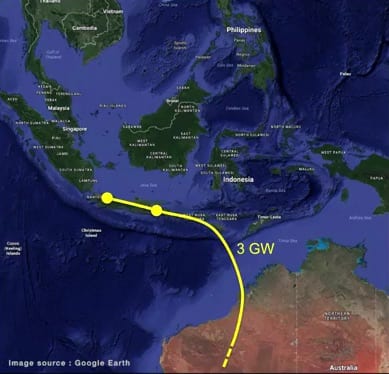
The distribution of solar and wind energy from one side of a continent to the other, and even between continents is now “eminently feasible”, a leading energy researcher has claimed, thanks to rapid improvements in technology and falling costs.
Speaking at last week’s APVI Asia Pacific Solar Research Conference in Melbourne, ANU professor Andrew Blakers said high voltage DC transmission technology was “moving ahead in leaps and bounds,” while costs were coming “down and down.”
This was a trend, he said, that was largely being driven by China, where wind, PV and hydro were in the west, while most of the people were in the east: “there’s 3,000km in-between, and the span is being bridged with high voltage DC.”
“Intercontinental and intracontinental-scale transmission is now eminently feasible,” Blakers told the conference on Thursday.
“The really big systems now have voltages of around 1.1 megavolts, they’re traversing 3,000km, (with a capacity of) 12GW – which is a third of the Australian peak demand – for a single (cable)… with a loss of 10 per cent,” he said.
“Within a few years I think you’ll start to hear talk of linking Vladivostok with London, with a 2 mega-volt cable, with a loss of 10 per cent from one side of Asia to the other.
“High voltage DC is basically going to span the globe.”
But it’s not just China that’s pushing the technology forward. Around the world, the wide geographical dispersion of renewables – “many, many generators in many, many different places” – was going to be key to 100 per cent renewable energy powered grids.
“It’s a really important enabling technology for high renewables, because it allows you to spread your renewables over very large areas, with very large capacity in different weather and demand systems,” he said.
“If you spread your PV and wind collectors from Townsville to Adelaide, and across to Tasmania, and everywhere between, then there is zero probability the weather will be bad everywhere,” he said, adding that it would also hugely reduce the amount of storage needed to make systems stable.
As readers of RenewEconomy would know, the idea of installing an undersea HVDC cable from Western Australia’s wind and solar rich Pilbara region to Indonesia has been a hot topic in Australian renewables lately, with two separate groups proposing there own versions of the plan.
The first group, Pilbara Solar, is proposing construction of a 1500km sub-sea cable from the Dampier Peninsula to east Java, to export the generation from three gigawatt-scale solar farms – and is hoping the federal government’s Northern Australia Infrastructure Facility will support its cause.

The other, The Asian Renewable Energy Hub consortium (AREH), led by InterContinental Energy, CWP Energy Asia and global wind leader Vestas, has earmarked 7,000 square kilometres of East Pilbara land for solar and wind farms it hopes to connect to West Java via a 2500km HVDC cable, and potentially running it on through to Singapore.
As Simon Holmes à Court wrote in this article on RenewEconomy just over a week ago, the idea of running an ‘extension cord’ all the way from Australia to Indonesia would still considered crazy by some.
But to Blakers, the projects proposed for Western Australia are just the beginning.
“In the future, for Australia, we could imagine …a lot of cables …. including cables heading from Pilbara, north to Indonesia, meeting cables coming down through China and going west to India, and east to the Philippines, and so forth,” he said.








